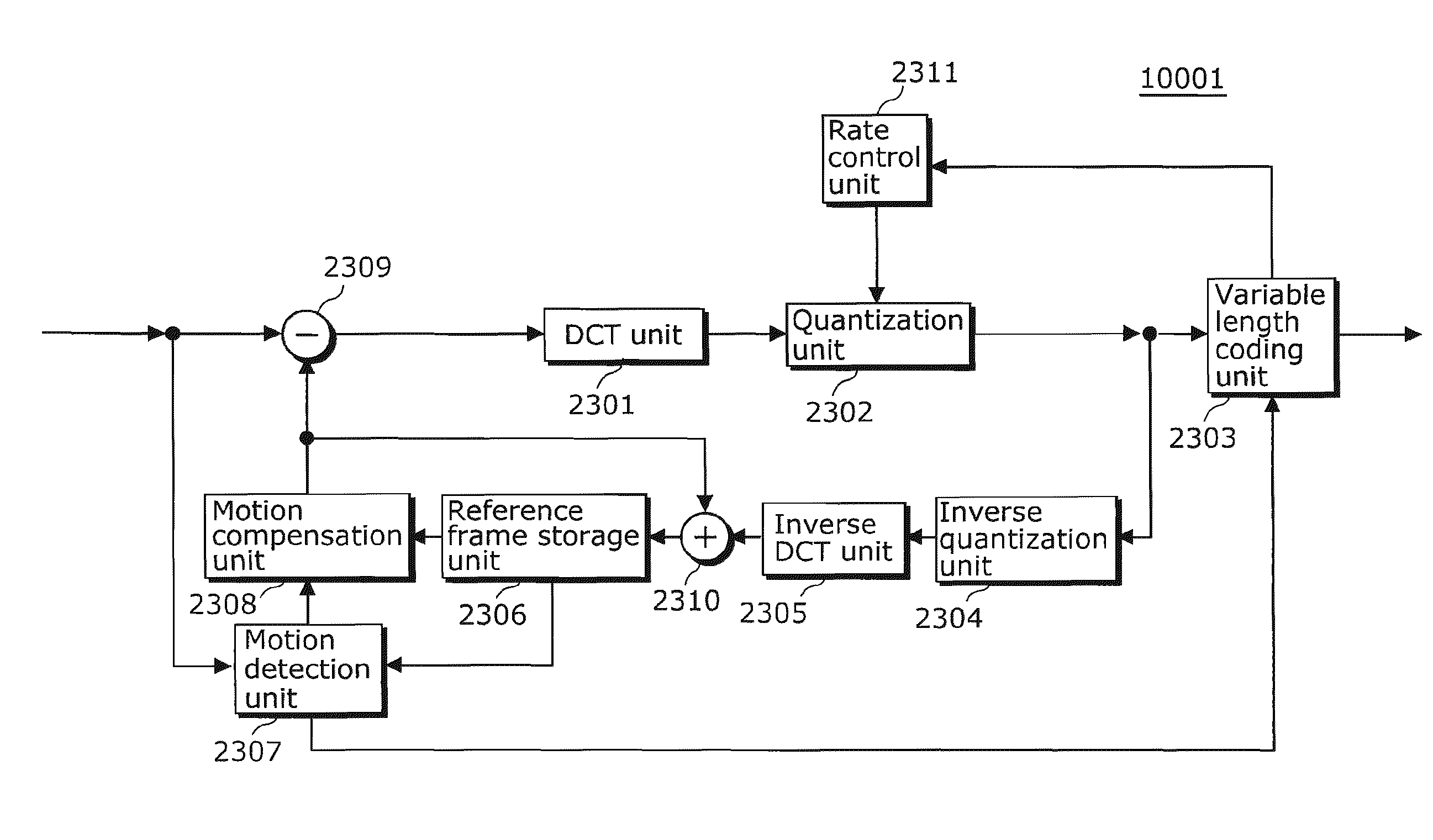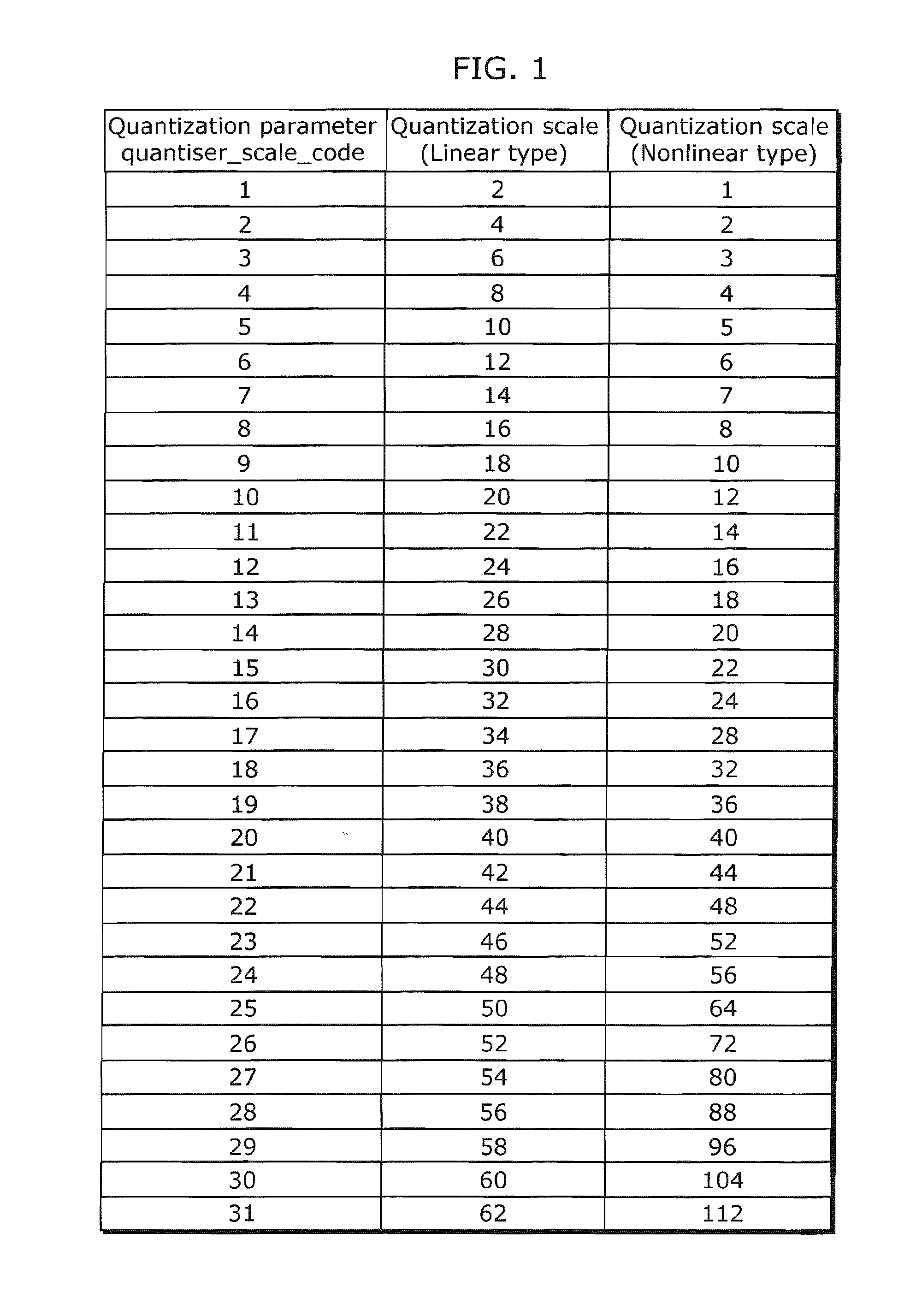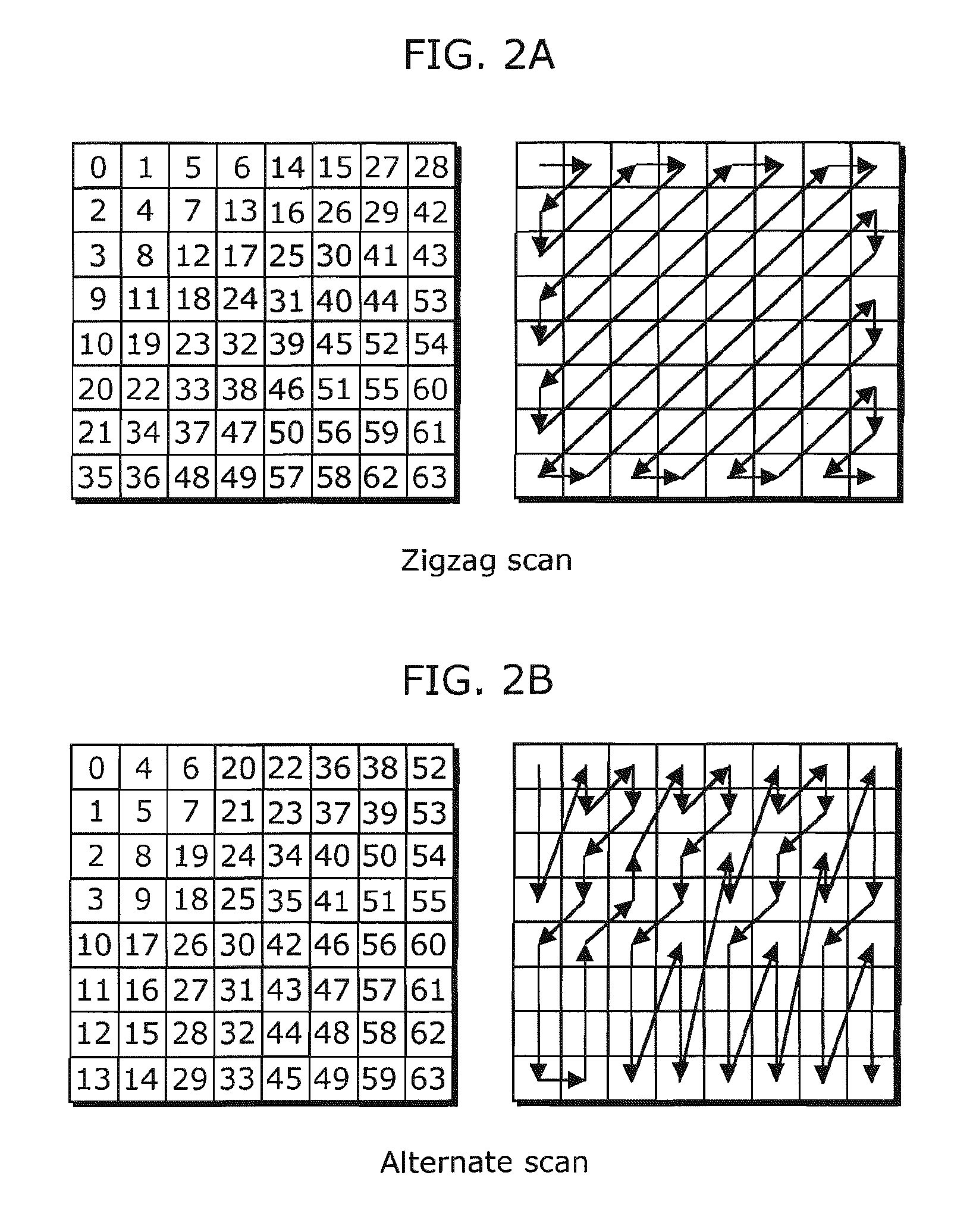Coding rate conversion apparatus, coding rate conversion method, and integrated circuit
a coding rate and conversion method technology, applied in the field of converting a coding rate, can solve the problems of not being able to achieve not being able to achieve being unable to achieve the effect of reducing the quantization error of the output stream, suppressing image quality degradation, and reducing the quantization error of the quantization
- Summary
- Abstract
- Description
- Claims
- Application Information
AI Technical Summary
Benefits of technology
Problems solved by technology
Method used
Image
Examples
first embodiment
[0181]The following describes an embodiment of the present invention, with reference to drawings.
[0182]FIG. 11 is a block diagram showing a structure of a coding rate conversion apparatus 1000 in a first embodiment of the present invention.
[0183]The coding rate conversion apparatus 1000 includes a variable length decoding unit 101, a variable length coding unit 102, a rate control unit 103, a quantization scale increase conversion unit 104, an MB header storage unit 105, a quantization matrix low-range decrease conversion unit 108, a picture header storage unit 109, and a quantization matrix conversion control unit 110.
[0184]The variable length decoding unit 101 receives an input of a stream for restoring a plurality of pictures. Hereafter, the stream inputted in the variable length decoding unit 101 is referred to as an input stream. The input stream is coded data obtained by coding the pictures. The variable length decoding unit 101 decodes an MPEG2 stream as the input stream, and...
second embodiment
[0315]In the coding rate conversion apparatus 1000 of the first embodiment, the quantization scale can take the value only in the range of 1 to 112 in, for example, MPEG2. Accordingly, when the quantization scale of the input stream is close to 112, quantization scale conversion factor β cannot be made larger. This makes it impossible to compensate for the code amount increase in low frequency components by the quantization matrix, as a result of which the coding rate cannot be reduced sufficiently.
[0316]In addition, in the coding rate conversion apparatus 1000 of the first embodiment, each coefficient of the quantization matrix can take the value only in the range of 1 to 255 in MPEG2. Accordingly, when coefficients of low frequency components in the quantization matrix of the input stream are already close to 1 to some extent, quantization matrix conversion factor α of low frequency components cannot be made larger. In such a case, image quality degradation cannot be reduced suffi...
third embodiment
[0396]In the coding rate conversion apparatus 1000A of the second embodiment, the quantization matrix can take the value only in the range of 1 to 255 in MPEG2. Accordingly, when coefficients of the high range (high frequency components) in the quantization matrix of the input stream are already close to 255, quantization matrix conversion factor α of high frequency components cannot be made larger. This makes it impossible to sufficiently reduce the code amount of high frequency components, as a result of which the coding rate cannot be reduced sufficiently.
[0397]In addition, in the coding rate conversion apparatus 1000A of the second embodiment, the quantization scale can take the value only in the range of 1 to 112 in MPEG2. Accordingly, when the quantization scale of the input stream is already close to 1, quantization scale conversion factor β in the significant MB cannot be made sufficiently small. This incurs a failure to suppress quantization errors caused by the high-range ...
PUM
 Login to View More
Login to View More Abstract
Description
Claims
Application Information
 Login to View More
Login to View More - R&D
- Intellectual Property
- Life Sciences
- Materials
- Tech Scout
- Unparalleled Data Quality
- Higher Quality Content
- 60% Fewer Hallucinations
Browse by: Latest US Patents, China's latest patents, Technical Efficacy Thesaurus, Application Domain, Technology Topic, Popular Technical Reports.
© 2025 PatSnap. All rights reserved.Legal|Privacy policy|Modern Slavery Act Transparency Statement|Sitemap|About US| Contact US: help@patsnap.com



